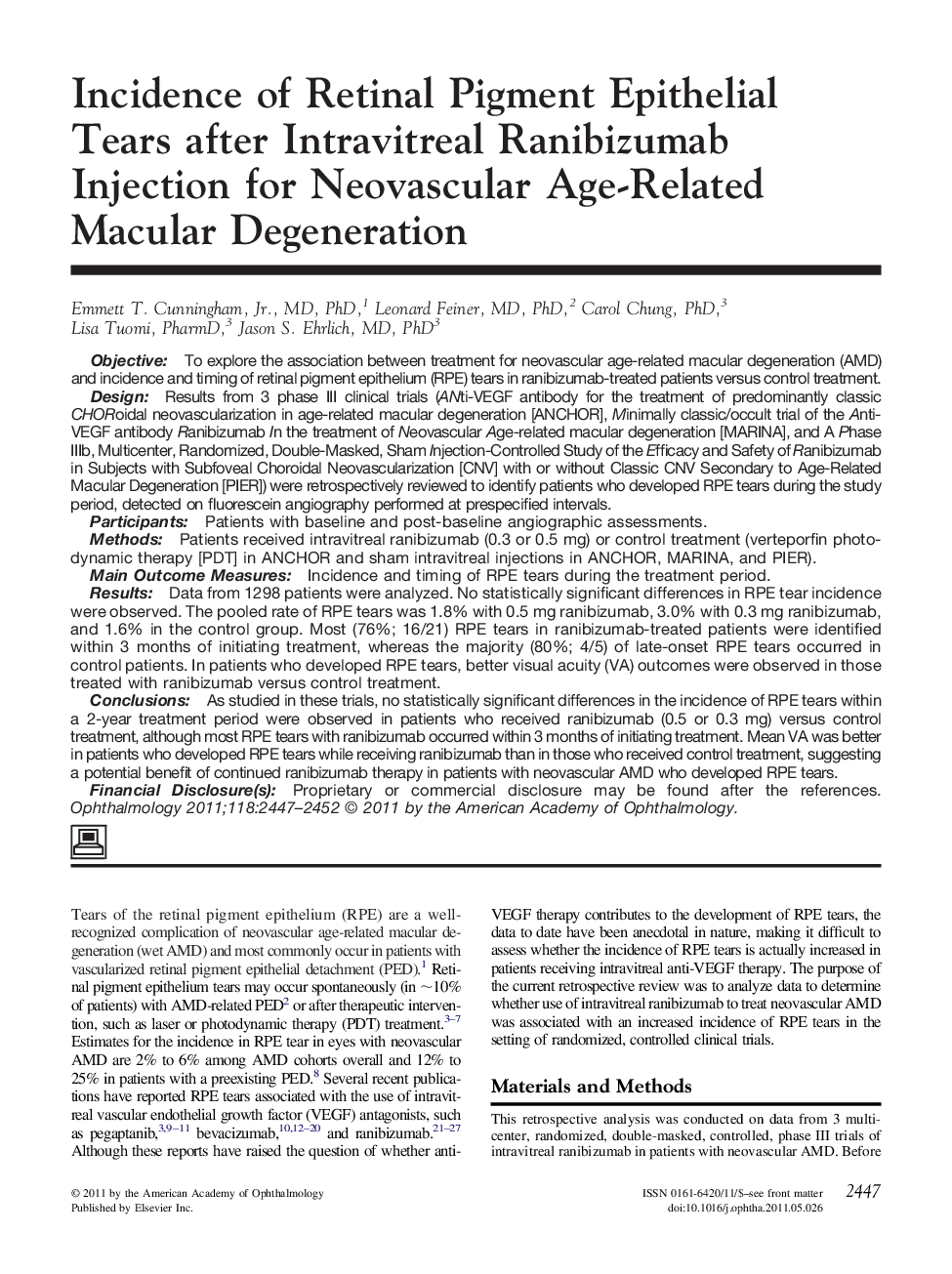| Article ID | Journal | Published Year | Pages | File Type |
|---|---|---|---|---|
| 4027605 | Ophthalmology | 2011 | 6 Pages |
ObjectiveTo explore the association between treatment for neovascular age-related macular degeneration (AMD) and incidence and timing of retinal pigment epithelium (RPE) tears in ranibizumab-treated patients versus control treatment.DesignResults from 3 phase III clinical trials (ANti-VEGF antibody for the treatment of predominantly classic CHORoidal neovascularization in age-related macular degeneration [ANCHOR], Minimally classic/occult trial of the Anti-VEGF antibody Ranibizumab In the treatment of Neovascular Age-related macular degeneration [MARINA], and A Phase IIIb, Multicenter, Randomized, Double-Masked, Sham Injection-Controlled Study of the Efficacy and Safety of Ranibizumab in Subjects with Subfoveal Choroidal Neovascularization [CNV] with or without Classic CNV Secondary to Age-Related Macular Degeneration [PIER]) were retrospectively reviewed to identify patients who developed RPE tears during the study period, detected on fluorescein angiography performed at prespecified intervals.ParticipantsPatients with baseline and post-baseline angiographic assessments.MethodsPatients received intravitreal ranibizumab (0.3 or 0.5 mg) or control treatment (verteporfin photodynamic therapy [PDT] in ANCHOR and sham intravitreal injections in ANCHOR, MARINA, and PIER).Main Outcome MeasuresIncidence and timing of RPE tears during the treatment period.ResultsData from 1298 patients were analyzed. No statistically significant differences in RPE tear incidence were observed. The pooled rate of RPE tears was 1.8% with 0.5 mg ranibizumab, 3.0% with 0.3 mg ranibizumab, and 1.6% in the control group. Most (76%; 16/21) RPE tears in ranibizumab-treated patients were identified within 3 months of initiating treatment, whereas the majority (80%; 4/5) of late-onset RPE tears occurred in control patients. In patients who developed RPE tears, better visual acuity (VA) outcomes were observed in those treated with ranibizumab versus control treatment.ConclusionsAs studied in these trials, no statistically significant differences in the incidence of RPE tears within a 2-year treatment period were observed in patients who received ranibizumab (0.5 or 0.3 mg) versus control treatment, although most RPE tears with ranibizumab occurred within 3 months of initiating treatment. Mean VA was better in patients who developed RPE tears while receiving ranibizumab than in those who received control treatment, suggesting a potential benefit of continued ranibizumab therapy in patients with neovascular AMD who developed RPE tears.Financial Disclosure(s)Proprietary or commercial disclosure may be found after the references.
